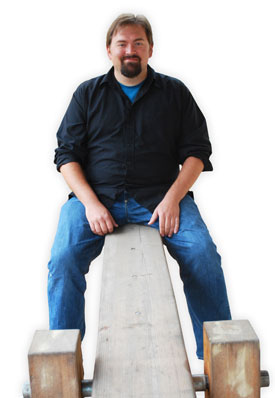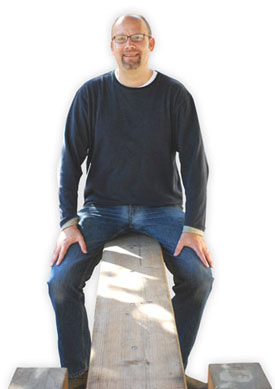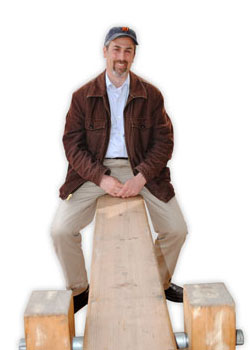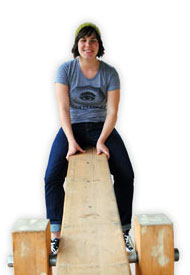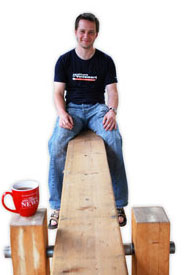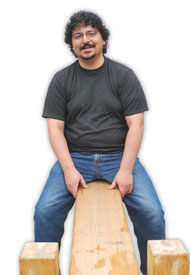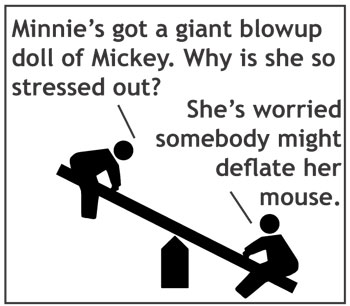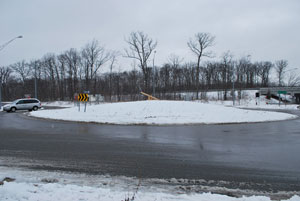Retaining Talent on a Teeter Totter
Editor’s note: HD, a.k.a. Dave Askins, editor of The Ann Arbor Chronicle, is also publisher of an online series of interviews on a teeter totter. Introductions to new Teeter Talks, like this one, also appear on The Chronicle’s website.
In the last few years, I’ve spent more time riding the hard wooden benches in the Ann Arbor city council chambers than I have straddling the teeter totter board. So last month I was glad to have a chance to take a ride with Bill Merrill, a software developer I met for the first time four or five years ago on a Ride Around Town (RAT). That was a monthly event that the Washtenaw Bicycling and Walking Coalition used to sponsor.
If Merrill had ever addressed the Ann Arbor city council during public commentary, then he could have reasonably begun by saying something like, “I came to Ann Arbor to attend school, but I stayed. And I’ve owned my house across from Allmendinger Park for almost a decade.”
This would, of course, be a standard gambit for public commentary – not just in Ann Arbor but probably in most every community – establishing your bona fides by appealing to longevity and rootedness in the community.
Home ownership is not just a way of saying to Ann Arbor city councilmembers that you’ve been here long enough to count. It’s also a way of saying, “I’m one of you.” All 11 members of the council are homeowners, even though less than half of Ann Arbor residents own the place they live.
In my time covering the city council for The Chronicle, Merrill has never addressed that body during the time allowed for public commentary. In that way he is like most other Ann Arbor homeowners – or for that matter, renters. Most of them, like Merrill, do not ever in their lifetime head down to city hall on the first or third Monday of the month to tell the city council what they think.
But the fact that he’s now sold his house and left Ann Arbor – even though he’s not leaving to take a job somewhere else or to follow a spouse, or for any other specific reason – makes Merrill different. It makes him different in a way that is likely not what the Pure Michigan campaign had in mind with its Ann Arbor slogan: “Ann Arbor does it up different.” That advertisement is supposed to make the “talent” want to come live here, not pick up and leave for no particular reason. [Full Story]




